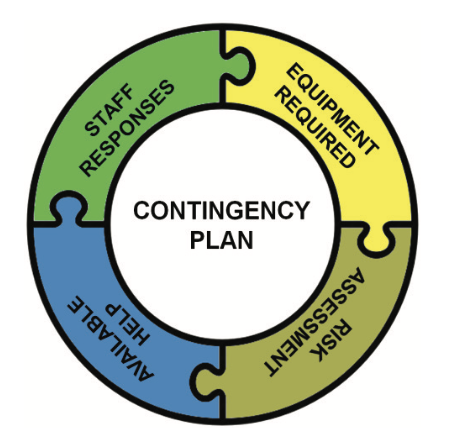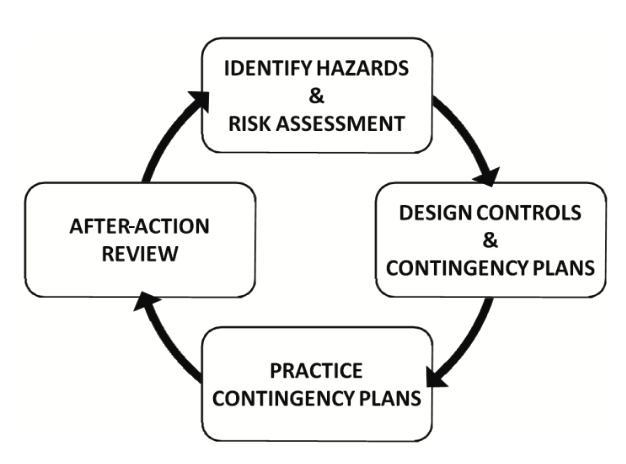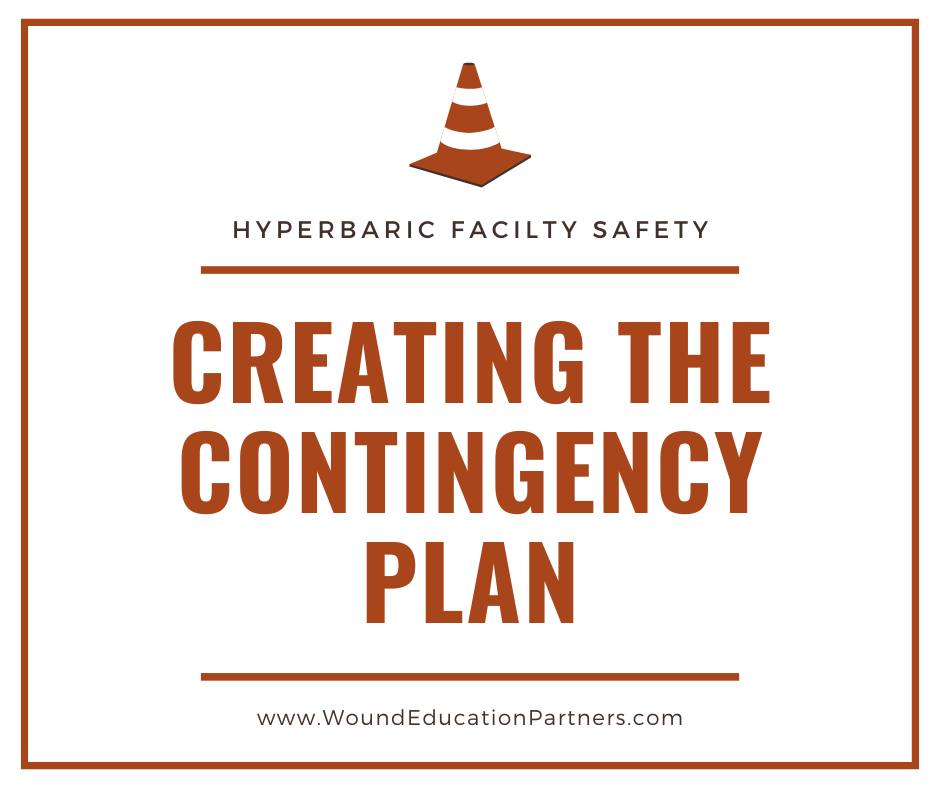Rx Pad
Hyperbaric Facility Safety: Creating the Contingency Plan
Analysis of hazards and risk assessment allows us to understand the true nature of the potential incident we are attempting to manage. This is an important first step in designing a contingency plan. There are several other important considerations that affect the design of the plan. Realizing the potential damage or injury helps us to identify appropriate staff responses. These responses should minimize the impact of the inc ident. It is important to consider what personnel are available to help (e.g., additional staff members, code team, and emergency responders) and how these individuals are capable of participating in the plan. Designing contingency plans with available personnel in mind drives minimum facility staffing decisions. It is also important to consider what equipment is available (e.g., personal protection, patient transportation, fire-fighting, and crash cart). All the considerations discussed above are likely to vary among different hyperbaric facilities.
ident. It is important to consider what personnel are available to help (e.g., additional staff members, code team, and emergency responders) and how these individuals are capable of participating in the plan. Designing contingency plans with available personnel in mind drives minimum facility staffing decisions. It is also important to consider what equipment is available (e.g., personal protection, patient transportation, fire-fighting, and crash cart). All the considerations discussed above are likely to vary among different hyperbaric facilities.
The objective is to identify a series of steps (i.e. procedure) that will manage the incident and minimize any negative effects. In most cases, the appropriate steps can not all be performed simultaneously. In some cases, the design of the equipment or facility dictates certain steps come before others (e.g., the chamber must be decompressed before an occupant can be evacuated from the facility). In some cases, the sequence of steps is dictated by the urgency of staff actions (e.g., if a person is experiencing pain during pressure change, the first step is to immediately stop the pressure change).
A sample contingency plan is included to illustrate the process of putting the appropriate steps in the appropriate order (see Figure 1). The incident of smoke or flame inside a multiplace chamber was chosen because it contains many of the elements dis- cussed above, including urgent actions, actions of at least two staff members, activation of emergency responders, chamber equipment, fire-fighting equipment, and personal protective equipment. It also contains a decision point where, after the urgent actions are taken, an assessment is made. If the incident is under control, a different set of actions are taken than if the incident is not yet under control.
Drills
Contingency plans must be rehearsed. By design, an incident should be a rare occurrence; therefore, it is necessary to perform routine drills and tests to ensure competence of the staff and adequate performance of equipment. Practice drills should be as realistic as possible in order to truly test the adequacy of the plan.
When an incident occurs, it is an opportunity to improve the safety program. Each incident should trigger an AAR. The following questions should be asked:
- What controls were in place?
- Were the controls used? If not, why?
- Were the controls effective? If not, why?
- What additional or different controls are necessary?
- Was there a contingency plan in place?
- Was this plan followed? If not, why?
- How effective was the contingency plan?
- What needs to be added or changed in the contingency plan?
The AAR helps identify previously unrec- ognized hazards, facilitates a reassessment of risk, and helps identify appropriate modifica- tions to controls and contingency plans. The AAR should be performed whenever a contingency plan is used, either in a real incident or a practice drill.
Practicing contingency plans, followed by AAR, triggers a performance improvement cycle. This circular process from identifying hazards to AAR and back again makes the safety program dynamic.
Learn More About Hyperbaric Facility Safety
We wrote the book on hyperbaric factily safety! Get it here from our sister company, Best Publishing Co. "Hyperbaric Facility Safety: A Practical Guide, Second Edition"
Learn More About Hyperbaric Facility Safety with our 16-hour CEU Course! Find more details here.
When you subscribe to the blog, we will send you an e-mail when there are new updates on the site so you wouldn't miss them.



Comments